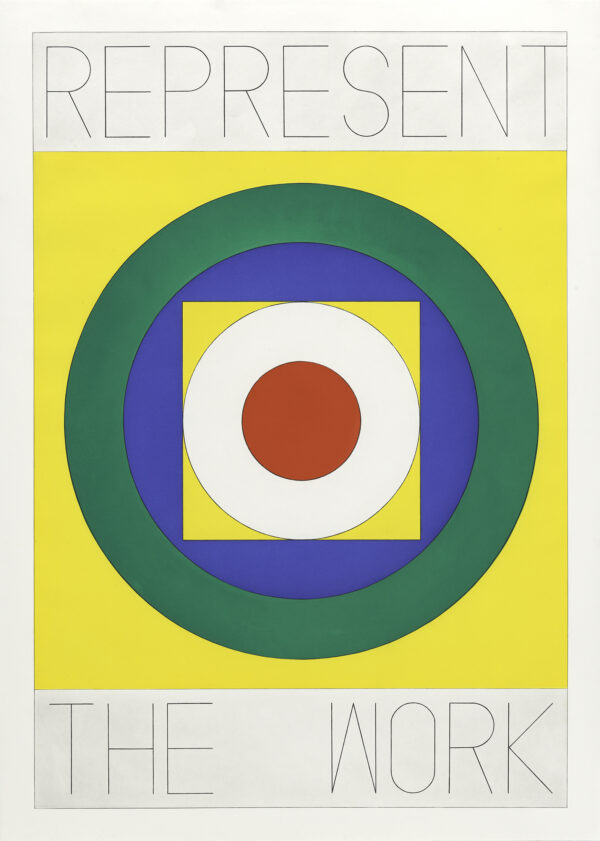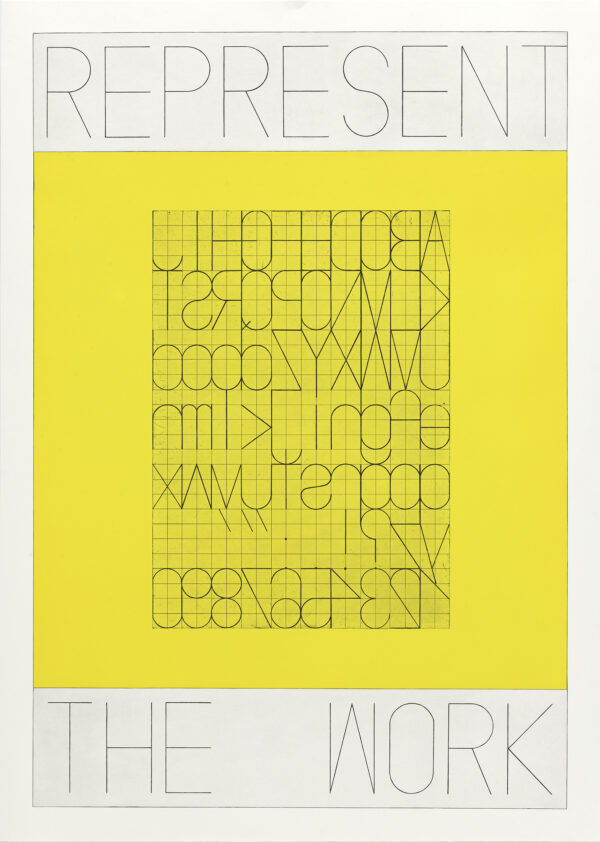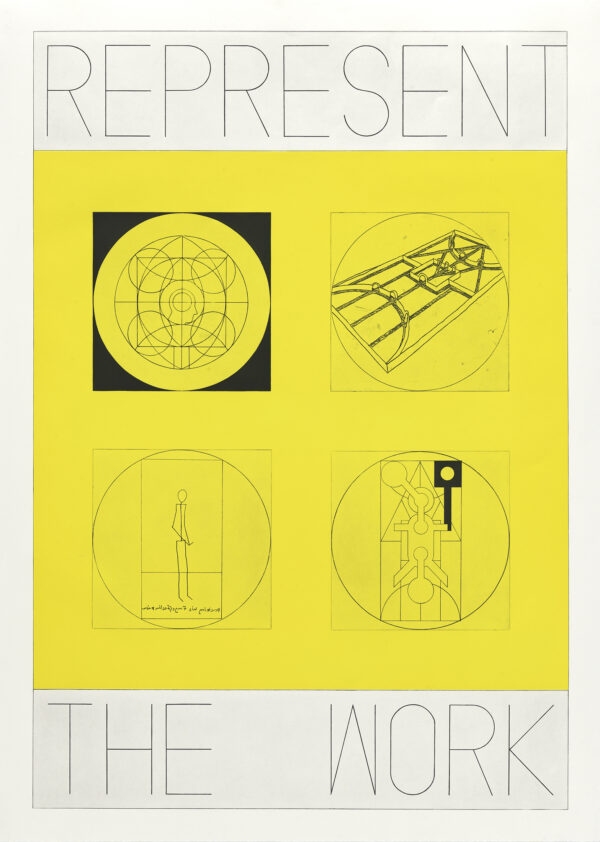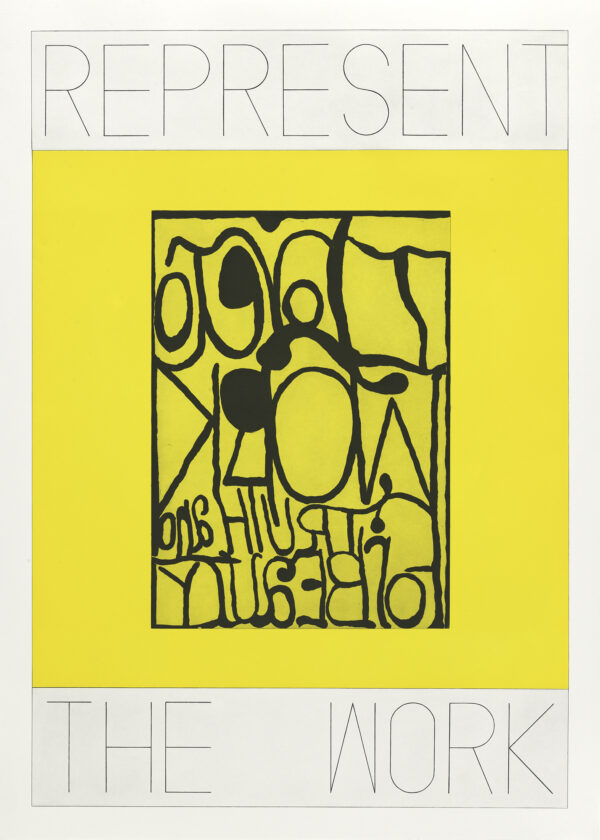Matt Mullican is an artist known for working with performance, photography, drawing, printmaking, sculpture, and video. His art examines life, cosmologies, language, consciousness, and systems of knowledge through large signs, banners, charts, lists, flags, diagrams, and collected objects. In a 1980 essay from Real Life Magazine, artist and collaborator Allan McCollum described Mullican’s work in this way: “His subject matter is not simply his feelings about life, but his coming to terms with the whole of his existence; in order to understand himself and the world he inhabits, he is working to reconstruct it in every aspect, piece by piece.”
Born in 1951, Matt Mullican is the son of artists Luchita Hurtado and Lee Mullican. He grew up in Santa Monica and received a BFA from the California Institute of the Arts in 1974. At CalArts, he took the seminal “post-studio art” class taught by John Baldessari and was a classmate of David Salle, Troy Brauntuch, and James Welling. They, like Mullican, would become associated with the Pictures Generation. When asked in a 2008 New York Times article what he remembered best about Mullican, Baldessari answered, “His mind. I couldn’t shut him off.”
After graduating, Mullican moved to New York City, where his early work consisted of performances and drawings focused on abstract subjects like identity, perception, empathy, and reality. In 1974, he made a series of ink drawings examining the life of a stick figure named Glen who is representative of both Mullican and a generic artist. Glen is drawn in different situations: pinching himself, remembering a ski trip, or falling asleep on the floor, for example. In the book Matt Mullican: Conversations, Mullican explains that he wanted to “create a model presence” with Glen. “I was interested in the pain he felt inside the picture space. I wanted to understand his pain, find out where it existed.”
In 1978, Mullican began using hypnosis in his performances. Through the performances, he developed an alter ego called “That Person” who, he has said, is “ageless and genderless.” While hypnotized, Mullican’s behavior was often disturbing yet fascinating. He yelled profanity, acted like a 5-year-old, and crawled on the floor. He also made black ink drawings of numbers, symbols, and phrases on paper that were then mounted to bedsheets and hung up between wooden poles in a maze-like installation for exhibitions. The drawings act as a record of “That Person’s” thought process and Mullican’s trance state. He took a break from the mentally and physically draining performances during the ‘80s but has since continued them, starting again in the ‘90s.
Over his fifty-year career, Mullican has developed two personal cosmologies that form the model for his work. The first cosmology, devised in 1973, is based on his childhood understanding of fate and what comes before birth and after death. The second, dating back to 1983, is a theory of what he calls “the Five Worlds.” The Five Worlds is a classification system of the universe, organized into five categories that correspond to different levels of perception. Mullican uses a set of colors to represent each world: green stands for material, blue for everyday life or “the world unframed,” yellow for ideas or “the world framed,” black and white for language, and red for the subjective. He also uses pictographs, or “signs,” which are universally recognizable images commonly seen in public places for basic wordless communication. He depicts the signs on banners, bulletin boards, maps, stone reliefs, and canvas rubbings. For example, Untitled (Bath Banner The Arts) (1988) is a large black and yellow nylon banner with eight squares in a two-by-four layout. A music note, a painter’s palette, and a camera are among the identifiable signs illustrated within the squares. Mullican often methodically arranges these banners and other media into massive, immersive exhibition installations to reflect his five-world cosmology.
Mullican has had solo exhibitions in many major institutions including the Dallas Museum of Art; the Hirshhorn Museum and Sculpture Garden, Washington D.C.; Musée des Arts Contemporains, Grand- Hornou, Belgium; Pirelli HangarBicocca, Milan; the Stedeljik Museum, Netherlands; the Centre Georges Pompidou, Paris; and the de Young Museum, San Francisco. His works are held in the collections of the Tate Modern, London; the Art Institute of Chicago; The Museum of Modern Art in New York; the Los Angeles County Museum of Art; the Cincinnati Art Museum; and the National Gallery of Art, Washington D.C., among others. He is represented by Peter Freeman, Inc., New York; Capitain Petzel, Berlin; Mai 36 Galerie, Zurich; and Marc Selwyn Gallery, Los Angeles. Matt Mullican lives and works in New York and Berlin.
-Carleigh Koger
BOOKS ON THE ARTIST





